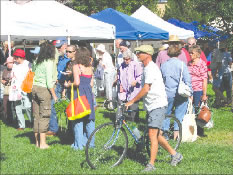by Laurel McHargue “NEED FOOD,” read the cardboard sign held by a woman who appeared to be in her 70s. It’s hard to gauge the age of homeless people, as most do not age well. I was returning from a weekend conference in Denver and stopped by our local Safeway for a few things before going home. The petite woman was walking toward the store in the opposite direction of my travel and I had already driven past her. “Just go home,” said the left hemisphere of my brain. It was Sunday afternoon. I was tired from the weekend festivities…

